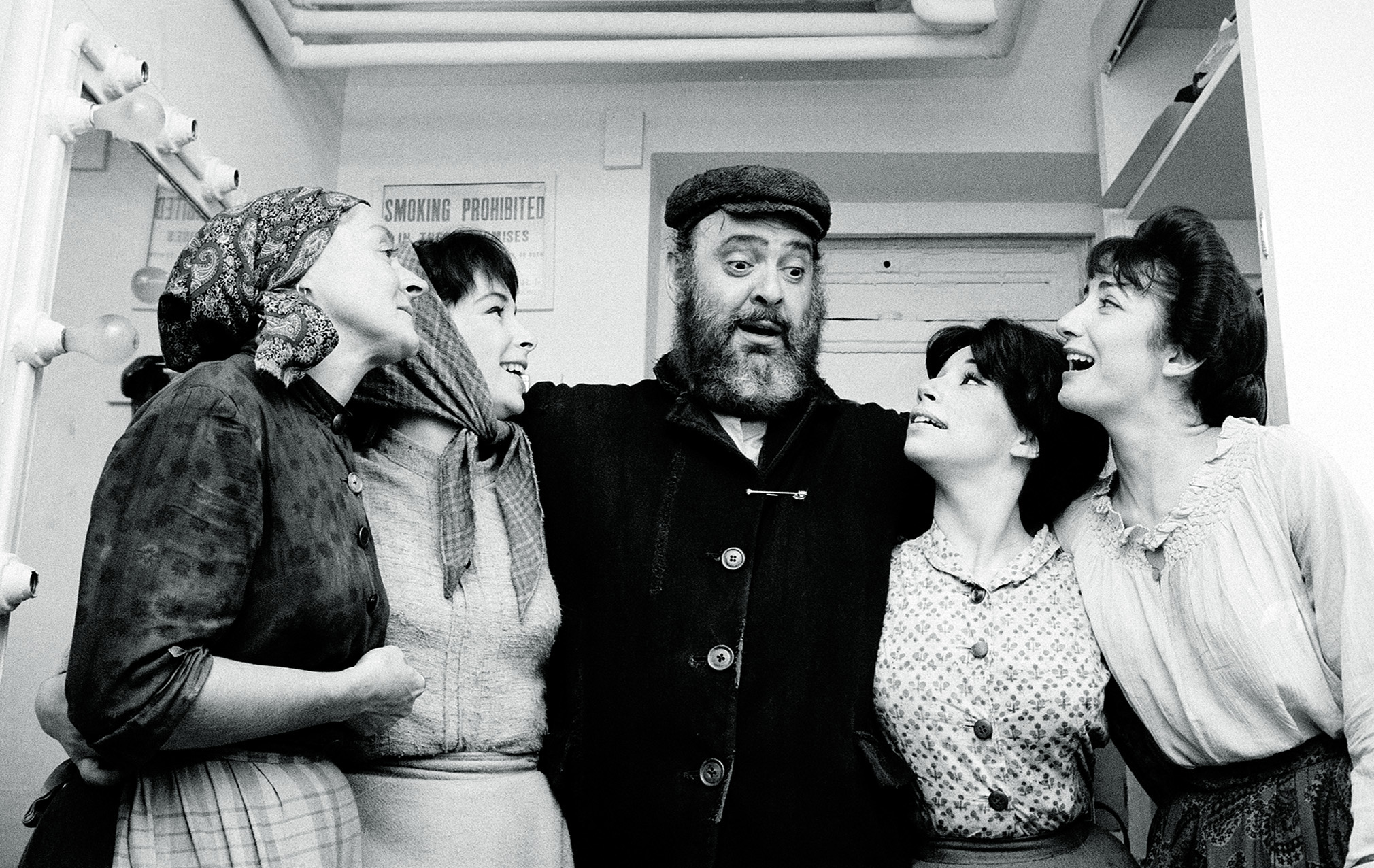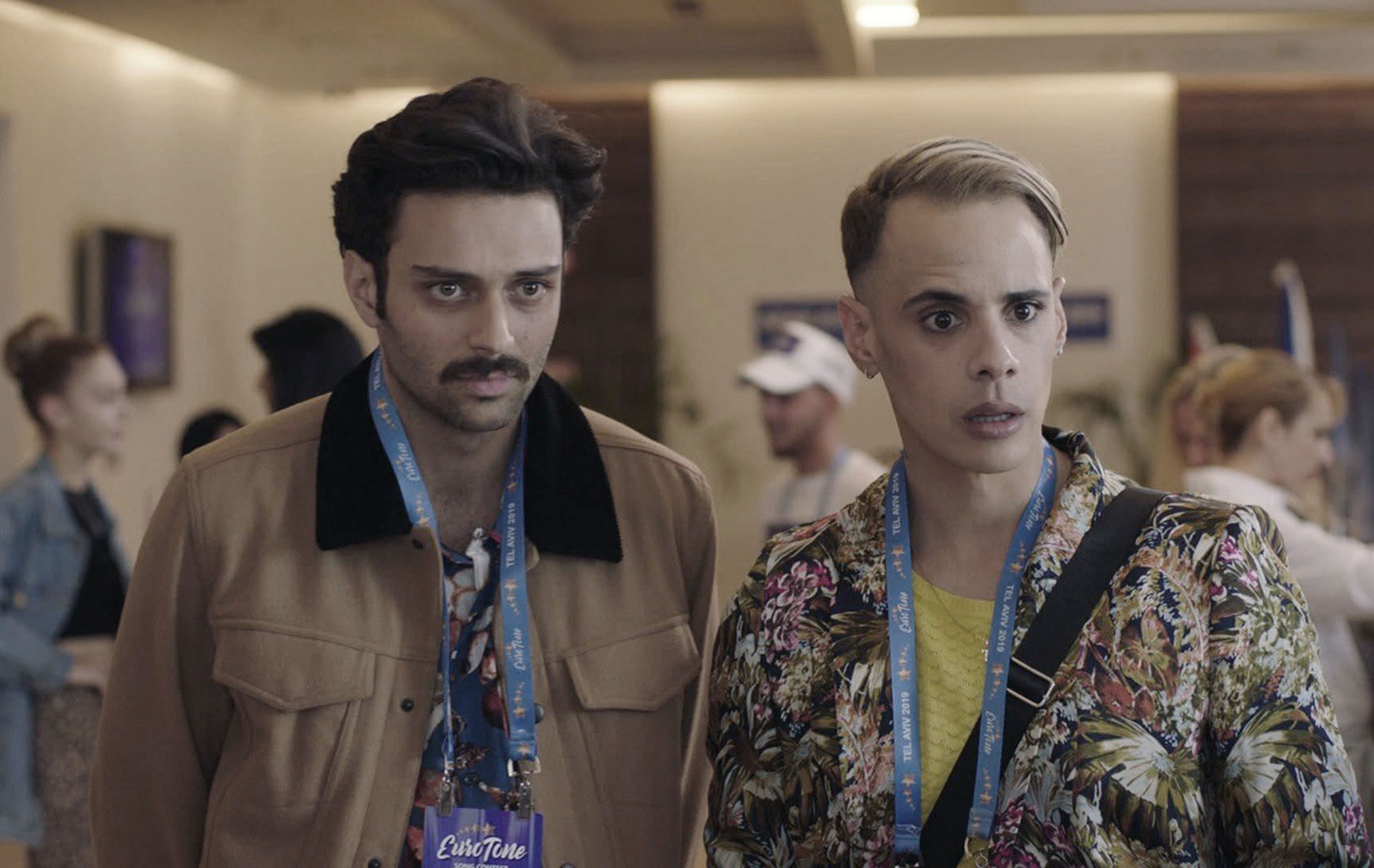Yesh! Film Festival explores a multitude of Jewish identities, including Palestinians

Zurich's Yesh! Film Festival, running from June 3-10, brings a selection of 32 recent films revolving around the centenarian Jewish question(s). But not just: it also reminds viewers that the Palestinian issue is to be reckoned with in the current fabric of Jewish identity.
The Yesh! FestivalExternal link comes in the aftermath of one of the most deadly episodes of the Israeli-Palestinian conflict. It explores past and present traumatism in the form of horror, drama, comedy and documentaries spanning Europe, South America and the Middle East. And asks the question: What does it mean to be Jewish today?
The most recent outbreak of violence between Israelis and Palestinians awakened the usual ghosts related to this enduring conflict, including 2000 years of exile, persecution and segregation that eventually converged in the Holocaust and the creation of the state of Israel.
“The Vigil” (Keith Thomas, USA, 2019) creatively exhumes many of these ghosts and historical traumas in the form of a horror movie. Meanwhile, “The Dead of Jaffa” (Ram Loevy, Israel, 2019) makes use of a dramatic plot that brings to life a more recent dramatic event: the expulsion of Palestinians right after the war that is remembered, by Israelis, as the war of Independence (1947-48), but by the Palestinians as the Nakba, or the “catastrophe”.
Yesh! Festival makes a bold move by including in its programme a cinematic jewel by the twin brothers Arab and Tarzan Nasser, the Palestinian-French-German co-production “Gaza mon amour” (2020). This gesture is a token to the fact that Jewish, or more specifically Jewish Israeli, fate is inextricably linked to the Palestinian’s.
“Gaza mon amour” is a delicate love story crushed between the Israeli blockade and the strict controls imposed by Hamas in the Gaza Strip. Since the Nasser brothers live in French exile, the film was shot in Jordan and Spain, and also features the grande dame of Palestinian film, Hiam Abbass, whose nomadic career covers Arab, Israeli (“Lemon Tree”), French, and American productions (“Blade Runner 2049”; the TV series “Succession”).

Fiddling with history
Unsurprisingly, the bulk of the programme consists of documentaries and docudramas focused on the big events of 20th century Jewish history. The great Swiss actor Bruno Ganz (1941-2019), in his final movie, plays Georg Goldsmith, an escapee of the Holocaust challenged by his son to reckon his past in the German-Danish co-production “Winter Journey” (Anders Østergaard, 2019). The dialogues are based on interviews with the real Goldsmith, illustrated by reenactments and documentary footage. The ghosts never sleep.
The historical films span a large geographical range – Germany, Switzerland, Ukraine, ex-Czechoslovakia, Poland, Hungary, the US – highlighting the fact that the Jewish drama, be it through assimilation or segregation, cannot be extricated from European national narratives, just as the Palestinian element cannot be effaced from Israeli history.
The documentary “Golda”, about the former Israeli prime-minister of Ukrainian-American origin Golda Meir, portraits an icon of the Zionist movement, whose unhappy utterance that “there were no such a thing as Palestinians”, as quoted by the Sunday Times and Washington Post in June, 1969, still echoes in the inflamed nationalist-religious Jewish mobs seen recently chanting anti-Arab slogans in Arab communities inside Israel.
To complicate the debate, enter the Evangelical Christians from the US and their unflinching devotion to the state of Israel. Director Maya Zinshtein follows a group of evangelicals in Kentucky in “Til Kingdom come”, exposing the unnerving mix of fanaticism and ideology that reaches the higher echelons of American political power.
Israeli cinema, a humanizing factor
Israeli cinema has played an important role against the extremist trends observed in the last decades within Israeli society, avoiding and decrying the efforts to dehumanize the Palestinians (as Jews had been dehumanized by centuries of anti-Semitism) and to delegitimize their claims for justice under the occupation, or at least some degree of fair treatment in a country recently condemned by Human Rights Watch as an apartheid stateExternal link.
The Israeli-Palestinian conflict seems even more acute when it is not tackled directly. The veteran film-maker Amos Gitai brings with his “A Tramway in Jerusalem” (2018) a multiplicity of identities and personal dramas overlapping the very well-known tensions, as he subtly portrays a tramline that crosses the city, from the Jewish quarters to the Arab eastern part. Humanizing the multitudes – Jewish, Arab, Christian – is a powerful poetic weapon of resistance.
Israel has other social fault lines that also feature in the festival. Homosexuality versus tradition and racism (“Kiss me Kosher”, “Douze Points”), or the post-Soviet Russian immigration (“Golden Voices”) come side-by-side with more harmless romantic comedies (“Honeymood”, “Love in Suspenders”) and, for a break, a chilling spy thriller (“The Operative”).

The ‘wandering Jews’
In the diaspora, where the Jewish heritage mingles with the host culture(s), the identitarian complexities reach exponential levels. In other words, that’s where it is impossible to speak of a “Jewish identity” per se. Put 10 Jews together in a room, says the old adage, and you will come up with 11 different points of view.
Two millennia of persecutions, nomadism, assimilation, and resilience operated deep fissures in the Jewish social, political, and cultural fabric. Anti-Semitic propaganda of the last two centuries invented a cabal of Jewish domination of the financial world, of Hollywood, of capitalism, of bolshevism, communism… Jews were to blame for plagues, earthquakes, the misery of the poor and the nightmares of the rich. Probably all of these fantoms relate to the difficulty, or the very impossibility, of defining what makes a Jew so different from other human beings.
The question of the Jewish identity in the diaspora couldn’t be left out of the festival, notably in the German films “Frau Stern” (Anatol Schuster, 2019), about a 90-year-old Holocaust survivor, and “Das Unwort” (The unword, Leo Khasin, 2020), that deals with a very current issue of anti-Semitism, racism and communal differences among immigrant children. Current social disparities related to identitarian issues are also at the core of the Italian “Thou shalt not hate” (Mauro Mancini, 2020).

And last but not least, “Babenco”, by Barbara Paz (Brazil, 2019), is a documentary where the Jewish origins of Argentinian film maker Hector Babenco is only a side dish – but a defining one. That explains, at least in part, Babenco’s persona as an eternal outsider, a character trait in which he relished and which also left him free to create a very diversified body of work, tackling serious social issues.
It is impossible to pin down Babenco’s style. The director of “Pixote” (1980), “Kiss of the Spider Woman” (1985), “Ironweed” (1987, with Jack Nicholson and Meryl Streep), among others, never felt at ease in his native Argentina nor anywhere in his hipster vagabonding youth in Europe. Even in Brazil, his home by choice, he was always considered a stranger, both vilified and admired for working in the international scene.
Barbara Paz, Babenco’s widow, filmed him in his last frail years, encouraged by the director himself. It is a filmic testament of his struggle against cancer through his love for cinema. And a definitive reminder that, beyond identitarian labels of religion, tradition, and ethnicity, Jews are just complex human beings like everybody else.
What’s in a Jew?
The multilayered Jewish character can be traced since biblical times. The early Jews were divided in 12 tribes, each one accorded to the patriarch Jacob’s 12 sons. Then there was a division of castes: the Levi’im (brahmins), Cohens (priests) and the rest (Israel). This division is still considered by traditional currents but disregarded by the reformist rabinate.
After the Romans destroyed the second Temple in Jerusalem in 70 AD, triggering the Jewish diaspora, four main vectors developed in parallel ways. ‘Ashkenazim’ are the Jewish peoples scattered around central and Eastern Europe, including Russia; the ‘sephardim’ (from Sfarad, or Spain in Hebrew) are the Jews who followed the Muslim Empire to the South of Spain and there thrived, only to be expelled by the Catholic gentry in 1492, scattering along the Mediterranean. Many found refuge under the Ottoman Empire, another significant number moved to the Netherlands, where they took an active role in the Dutch colonial entreprise and in the founding of the colony of Nieuw Amsterdam – known today as New York.
A medieval Spanish dialect, Ladino, could still be heard until the interwar period in the streets of Alexandria (Egypt), Istanbul (Turkey), and Thessaloniki (Greece), where the Nazis finished off what was left of this once vibrant community.
There was still a third large group of Jews who never left the Middle East, the so-called ‘mizrahim’ (Orientals), who spread around the Muslim world, with large communities in today’s Iran, Iraq, Yemen, Syria, Lebanon, and Egypt. In the 20th century another current was “re-discovered”: the Jews from Ethiopia, also known as Beta Israel, supposedly descendants of the lost tribe of Dan. The Jewish elements of the Rastafarian culture relates to this tradition. The Ethiopian Jews were recognized as such by the Israeli state in 1975, who eventually rescued practically this whole community from the famine and civil war of 1980s Ethiopia in a huge repatriation venture.

In compliance with the JTI standards
More: SWI swissinfo.ch certified by the Journalism Trust Initiative









You can find an overview of ongoing debates with our journalists here . Please join us!
If you want to start a conversation about a topic raised in this article or want to report factual errors, email us at english@swissinfo.ch.